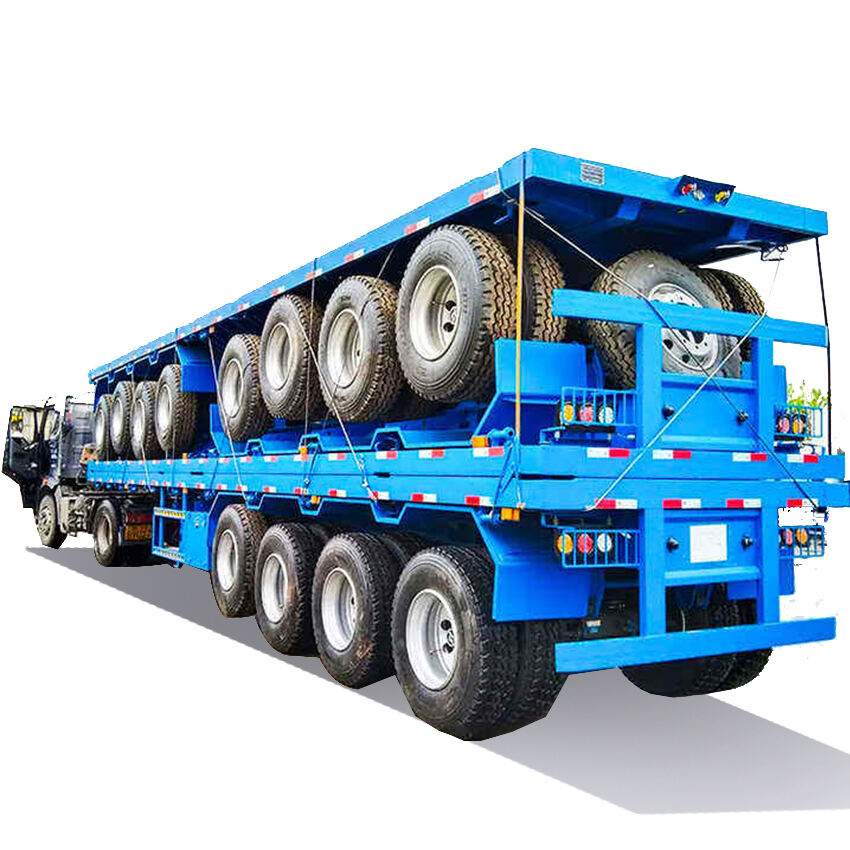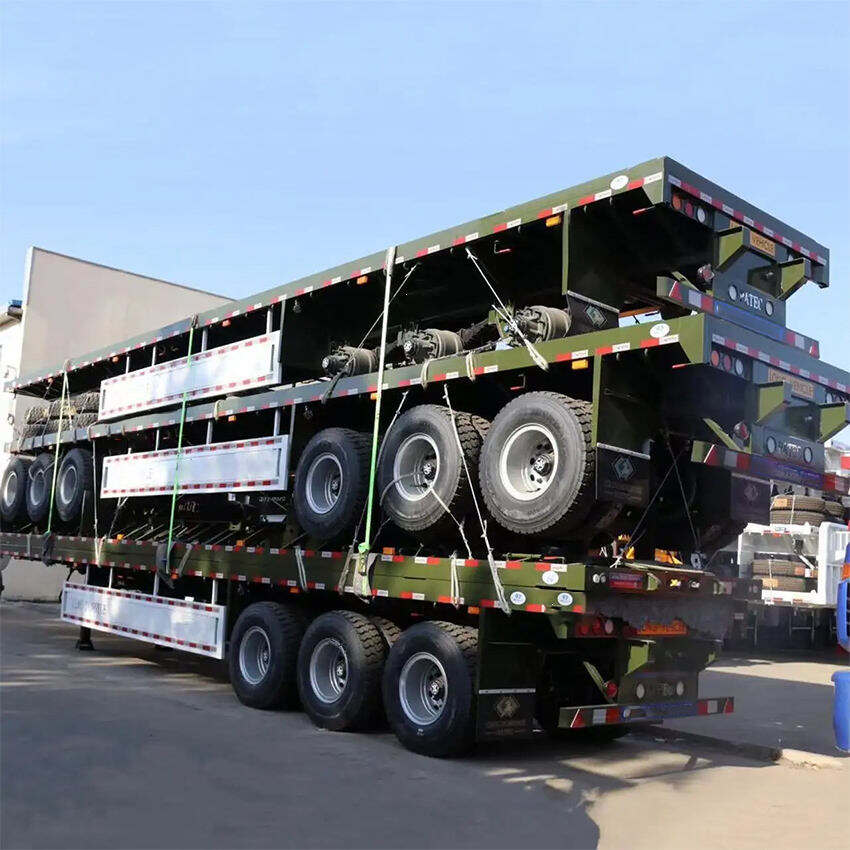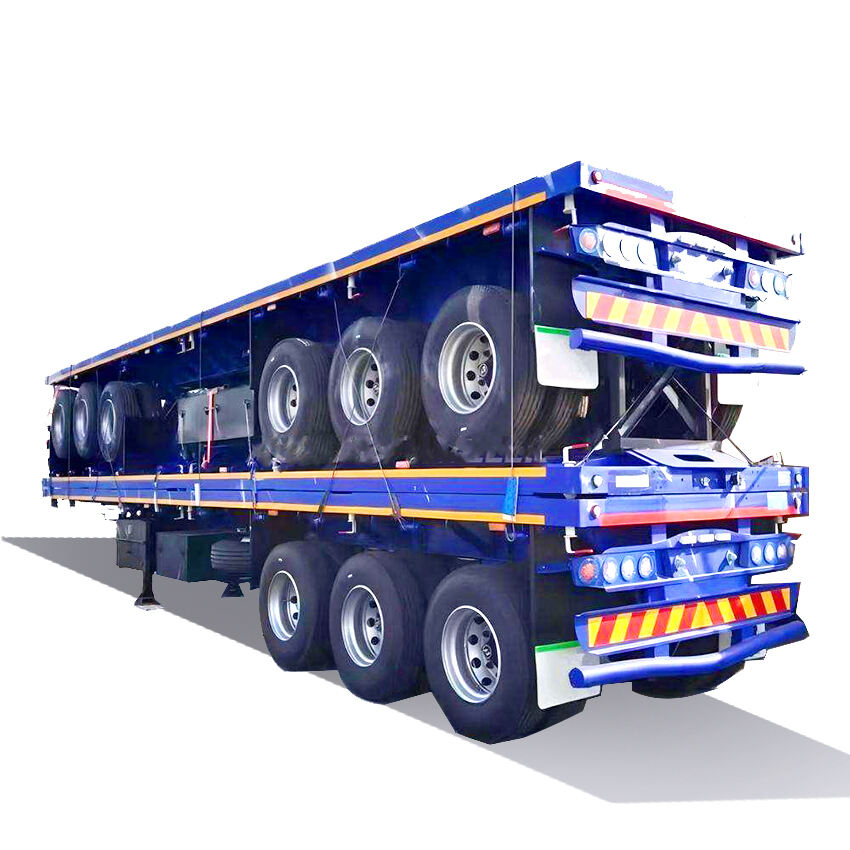24-D10, Building 3, Aosheng Building, Shunhua Road Street, Jinan, Shandong, China +86 13953140536 [email protected]
Semi trailers and regular trailers are both essential parts of the transportation game, but they work differently and serve different purposes across industries. What really matters is how each handles weight distribution. A semi trailer needs support from another vehicle since it shares the load between its own axles and the tractor's back wheels. That's why we see them mostly hauling heavy stuff across long stretches of road. On the flip side, full trailers stand on their own completely without needing extra support. They're generally better suited for moving lighter goods shorter distances within local logistics networks. Getting this straight about trailer types helps companies pick the right equipment based on what kind of cargo they need to move day to day.
Semi-trailers play an important role in moving goods across the country in the freight business. These trailers are built to be pulled behind big rigs but look different from regular trailers because they don't have front wheels. Instead, they connect directly to the tractor unit through a special coupling system. What makes them work so well is that part of their weight actually gets transferred onto the tractor itself. The tractor then handles not just pulling power but also serves as the front support structure for the whole rig when it's on the road.
Semi trailers come packed with features that make them workhorse vehicles in the transport industry. What really stands out is how they handle weight distribution since they don't have those front axles that regular trucks do. Without those extra wheels upfront, these rigs can turn corners much easier, which makes all the difference when navigating tight city streets or rural backroads. Plus, the way they're built lets them carry significantly more cargo because the tractor unit provides solid backing support. Truckers know this matters a lot for getting maximum payload while staying within legal limits, something that directly impacts bottom line profits for shipping companies across the country.
There are various types of semi-trailers available, each designed for specific logistical purposes. Common types include:
Each type of semi-trailer serves distinct roles within the broader logistics framework, demonstrating their versatility and essential role in global commerce.
Trailers basically refer to those vehicles without engines that mainly carry stuff around. They differ from semi-trailers because they stand on their own wheels completely and don't need another truck to hold them up. This independence means they handle their cargo all by themselves, which makes them pretty straightforward to use in lots of different shipping situations. In the transport world, trailers really stand out as flexible workhorses. Companies love how they can switch between carrying boxes, machinery, or even livestock without needing extra equipment like tractor units hanging around to support them.
What makes trailers so popular is their light build, something that really helps save on gas money and makes transportation easier overall. Most trailers have options when it comes to how they attach to vehicles. Think bumper pulls for those weekend trips or gooseneck models for bigger jobs. The real beauty lies in how adaptable these things are. People modify them all the time depending on what they need to haul around town. From helping move furniture across town to carrying garden tools or delivering goods for business purposes, there seems to be no end to what trailers can handle. Because of this flexibility, they show up everywhere from construction sites to backyard adventures solving countless transportation problems along the way.
Trailers come in all sorts of shapes and sizes, built for different jobs around town and across country roads. Take utility trailers for example they get plenty of use moving stuff like couches, garden tools, maybe even a lawnmower or two when someone needs to relocate their yard gear. Then there are car haulers, those big rigs that let dealerships ship multiple cars at once without putting thousands of miles on brand new vehicles. And don't forget dump trailers, which construction crews rely on daily to move tons of dirt, rocks, and other heavy materials from one spot to another before dumping everything right where it needs to go. From small local deliveries to interstate shipping operations, these various trailer designs show just how essential they remain in practically every industry that moves goods from point A to point B.
When comparing semi-trailers to regular trailers, the main difference comes down to where the weight sits and how many wheels actually hold things up. Semi trailers need help from whatever truck is pulling them because they only have wheels on one end. The front part basically hangs off the back of the tractor unit. That's why these rigs look so long and connected when they're on the road. Trailers work differently though. They've got their own set of wheels front and back, so they stand on their own two feet literally. No need for special coupling mechanisms. Because of this setup, most companies tend to use standard trailers for shorter trips carrying lighter stuff around town rather than across country hauls.
When it comes to how they connect and how easy they are to handle, trailers and semi-trailers are pretty different beasts. Most trailers hook up using either pintle hitches or drawbars. These setups work fine but get frustrating when trying to back them up, especially in tight spaces or crowded lots. Semi-trailers tell a different story though. They rely on those big fifth wheel couplings that actually make steering much simpler and give better stability while driving down highways at high speeds. Because of this design advantage, many truckers prefer semi-trailers for cross country runs or deliveries through mountain passes where careful control matters most. The difference in handling really shows itself during those tricky situations like navigating construction zones or making sharp turns in city traffic.
When looking at trailer specs, size matters quite a bit along with what they can haul. Semi trailers generally come in bigger sizes and can handle much heavier loads compared to regular full trailers. This makes sense when thinking about long hauls across country roads where weight limits matter most. Regular trailers tend to be on the small side though, which isn't great for shipping huge volumes of stuff. But these smaller units work well for companies doing multiple stops in one day, especially when deliveries happen within local areas or between nearby cities. What really stands out about semi trailers is how they stack containers on top of each other while still managing different kinds of freight without too much hassle. That kind of flexibility keeps them busy all sorts of places from coast to coast.
Semi-trailers stand out when it comes to choosing the right trailer for business needs. One big plus is how much weight they can carry. The way they're built lets part of the cargo weight sit on the tractor itself, which means these trailers handle bigger and heavier stuff without breaking a sweat. For companies shipping across country, this makes all the difference in getting products where they need to go faster. Fuel economy is another area where semi-trailers shine brighter than regular trailers. Because the tractor supports part of the load, there's less strain on the engine during those long hauls down the highway. Plus, drivers notice better handling too. Semi-trailers just feel more stable at high speeds, so there's less worry about things tipping over or cargo moving around unexpectedly while traveling at highway speeds.
There are some challenges when it comes to running semi-trailers though. For starters, getting one going requires a special kind of truck with that fifth wheel hitch setup, which means bigger upfront expenses for most operators. Handling these rigs isn't exactly straightforward either. Drivers need to develop good spatial awareness skills because parking and navigating through narrow streets or construction zones becomes much trickier. Training periods tend to last longer too, and maintenance bills can climb faster than expected over time. Still, despite all these hurdles, many companies stick with semi-trailers for their long haul operations simply because no other option matches their capacity for moving large volumes of goods across country distances.
When considering semi-trailer options for your transport needs, it's essential to look at the different features and specifications that suit your operations best.
Designed for the tough realities of intermodal shipping, the 40 foot chassis semi container trailer stands up to whatever comes its way during transport. Made primarily from high strength steel alloys, these trailers handle all sorts of heavy cargo without breaking a sweat, whether it's bulk sand shipments or massive rock aggregates. Capable of carrying around 80 tons when properly loaded, they perform reliably no matter what kind of road conditions exist along the route. From busy urban highways to remote mountain passes where trucks have to navigate tight spaces, this type of trailer keeps working day after day without showing signs of wear and tear.

When dealing with bigger shipments, the 3 axle container semi truck trailer comes in several weight classes including 40 tons, 60 tons, and even up to 80 tons depending on what kind of cargo needs transporting. These different models let operators pick the right size for their particular load requirements whether they're hauling construction materials across state lines or shipping industrial equipment between manufacturing sites. Built with reinforced steel frames and heavy duty suspension systems, these trailers stand up well under extreme conditions while maintaining stability at highway speeds. Many logistics companies find them particularly useful when working with oversized containers that standard trucks simply cannot accommodate safely.

Designed for flexibility, the 3 Axles Container Semi Trailers can accommodate different container types, aiding in maximizing operational efficiency. These trailers boast adaptability with 40ft, and potentially 20ft configurations, making them suitable for varied logistical needs. Their adaptable framework supports enhanced loading and unloading processes across different logistics environments.

Ultimately, selecting the right semi-trailer can significantly impact transport effectiveness, accommodating varying loads and operational requirements with seamless efficiency.
The choice between semi-trailers and regular trailers really comes down to what kind of cargo needs moving and how far it has to go. Semi units pack a bigger punch when it comes to carrying power and handling those tough road conditions over long distances. They just work better for heavier loads that need serious muscle. On the flip side, full trailers tend to shine in shorter trips where multiple stops are part of the plan. For businesses trying to figure out which option fits best, talking shop with folks who actually run these operations day in and day out can save headaches later on. A little homework goes a long way toward matching equipment capabilities with real world requirements.